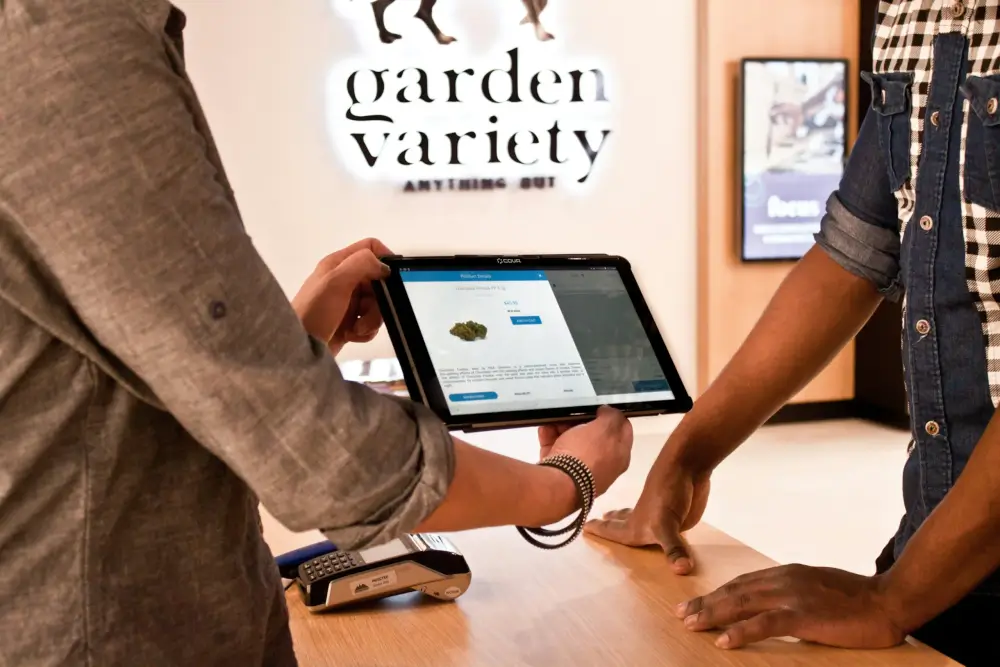The Point of Sale (POS) software market is currently experiencing rapid growth and transformation, presenting significant opportunities for both existing players and new entrants. This growth can be attributed to several factors, including the integration of advanced technologies, the shift towards cloud-based solutions, and the changing consumer behaviors.
Integration of Advanced Technologies
One of the key drivers shaping the future of the POS software market is the integration of advanced technologies. With the advent of artificial intelligence (AI) and machine learning, businesses can now leverage these technologies to enhance their POS systems. AI-powered algorithms can analyze customer data, predict buying patterns, and offer personalized recommendations, resulting in improved customer experiences and increased sales.
Additionally, the integration of biometric authentication, such as fingerprint or facial recognition, can enhance security and streamline the checkout process. This not only improves efficiency but also provides customers with a seamless and secure payment experience.
Driven by technological advancements and changing business needs
As of 2022, the global POS software market size reached approximately $10.9 billion and is expected to expand to around $18.5 billion by 2028, demonstrating a compound annual growth rate (CAGR) of about 9.22% during the forecast period (Globe Newswire). This growth trajectory is influenced by various factors, including the rising adoption of cloud-based POS systems, advancements in payment solutions, and the increasing demand for mobile POS terminals.
The market is segmented based on components, types, deployment modes, operating systems, organization sizes, and end-users. Notably, cloud-based deployment is gaining traction, offering ease of use and affordability, particularly for small and medium-sized enterprises (SMEs). This segment is expected to witness the highest growth rate over the forecast period. Large enterprises currently dominate the market share due to their demand for customized POS software solutions, which are typically more expensive than standard offerings (Grand View Research, Precedence Research).
Key industry players are focusing on expanding their market presence through strategies like mergers, acquisitions, product launches, and partnerships. Notable companies in the sector include NCR Corporation, Toast Inc., Square Inc., Clover Network Inc., Shopify Inc., Lightspeed POS Inc., and many others (Fortune Business Insights).
Regionally, the Asia Pacific market is projected to progress at the fastest CAGR, driven by a surge in electronic payment adoption and the growth of cashless transactions in retail, restaurant, and entertainment industries (Grand View Research). In contrast, the North American market is largely propelled by the growing demand for cloud POS software and the flourishing retail sector (GM Insights).
The POS software market’s expansion is also being fueled by the integration of innovative technologies like artificial intelligence (AI), which is particularly impactful in the retail sector. AI in POS systems facilitates a range of functionalities from payment processing to inventory management, and helps in understanding evolving consumer behavior (Precedence Research).
The COVID-19 pandemic has had a significant impact on the POS software market. The pandemic led to an increase in contactless payments and a shift towards e-commerce platforms for essential items, driving the market growth (GM Insights, Globe Newswire).
To put it bluntly, the POS software market is not just sitting idle; it’s gearing up for a substantial expansion in the near future. And guess who’s leading this charge? It’s none other than cloud-based and mobile POS solutions, of course. The integration of advanced technologies and the evolving needs of SMEs and large enterprises are shaping the market dynamics, offering numerous opportunities for both existing players and new entrants in the field.
Market Size and Growth Projections:
The global POS software market size was valued at approximately USD 10.9 billion in 2022 and is forecasted to reach around USD 18.5 billion by 2028. This represents a significant growth, with a CAGR of 9.22% during 2022-2028.
Another report values the POS software market at USD 7 billion in 2022, projecting a more aggressive growth with over 15% CAGR from 2023 to 2032, potentially reaching USD 31.4 billion by 2032.
Segmentation and Trends:
The market is segmented by components, types, deployment modes, operating systems, organization sizes, and end-users. Notably, cloud-based deployment is gaining popularity, especially among SMEs, due to its affordability and scalability.
In terms of end-user segments, the retail sector dominated the industry in 2022, holding the largest market share. This is attributed to the growing adoption of innovative payment options by small retailers globally.
Regional Insights:
The Asia Pacific region is expected to experience the fastest growth, driven by the increasing adoption of POS terminals and the rise of cashless payment options in industries like retail, restaurants, and entertainment.
North America also represents a significant share of the market, propelled by factors such as the rising demand for cloud POS software and advancements in payment technologies.

Key Industry Players and Developments:
Major market players include NCR Corporation, Toast Inc., Square Inc., Clover Network Inc., and others, focusing on expanding their operations through strategies like mergers and acquisitions, product launches, and partnerships.
Recent developments include the partnership between VMWare and Stratodesk to deploy a new VMWare Retail POS system, and the acquisition of Linga by PNC Financial Group, which adds a suite of POS solutions.
| Company | Insights |
|
Agilysys, Inc. |
Agilysys, Inc., a global provider of hospitality software solutions, reported impressive financial results for fiscal 2023. The company achieved a record total net revenue of $198.1 million, marking a significant increase from the previous year. This revenue included a recurring revenue of $118.3 million and a subscription revenue growth of 27.5%. Agilysys also reported a net income attributable to common shareholders of $12.7 million, or $0.49 per diluted share, and an adjusted EBITDA of $30.3 million. These results reflect the company’s successful operations and growth in the hospitality software solutions market. |
|
Clover Network, Inc. |
Clover Network, Inc., headquartered in Sunnyvale, California, is a cloud-based Android point of sale (POS) platform launched in April 2012. As of September 2020, Clover processed $133 billion of annualized card transactions worldwide, making it the largest U.S. cloud POS firm. The company was acquired by First Data Corporation in December 2012, which was later acquired by Fiserv in 2019. Clover’s product line includes innovative hardware solutions like the Clover Station, Clover Mobile, and Clover Mini, catering to various payment processing needs. |
|
Diebold Nixdorf, Inc. |
Diebold Nixdorf Inc., a leading provider of ATM and retail technology solutions, reported significant financial growth in the third quarter of 2023. The company experienced a 17.1% increase in total net sales, amounting to $943.4 million. Notably, their gross profit rose by 20.1% compared to the previous year, while operating profit surged by an impressive 58.3%. This performance indicates strong market execution, with a particular increase in ATM unit sales by nearly 25% and self-checkout units more than doubling from the prior year. These results reflect Diebold Nixdorf’s success in navigating market challenges and capitalizing on growth opportunities, particularly in the banking and retail segments |
|
Epicor Software Corporation |
Epicor Software Corp is a provider of enterprise software solutions, including enterprise resource planning (ERP), financial management, and supply chain management. The company, headquartered in Austin, Texas, offers its services to a wide range of industries such as financial services, government, education, aerospace, automotive, energy, medical devices, and hospitality. Epicor is known for its comprehensive ERP services encompassing consulting, education, support, and managed services. The company has a significant presence in the technology and communications sector and employs approximately 3,800 people. |
|
Ingenico Group |
Ingenico Group, a global leader in the POS industry, provides comprehensive payment solutions. The company is actively engaged in over 37 countries, and it is recognized as the global market leader in POS. Ingenico has deployed over 40 million terminals worldwide and collaborates with over 1,000 banks and acquirers. Their diverse workforce comprises around 4,000 employees from 60 nationalities, operating out of 80 offices globally. Ingenico’s product portfolio includes a range of payment acceptance devices and services, focusing on operational excellence, security, and digital merchant experiences. |
|
Intuit, Inc. |
Intuit Inc., a prominent financial technology platform, reported strong financial performance for the fiscal year 2023. The company’s total revenue grew by 13% year-over-year, reaching $14.4 billion. This growth was driven by significant increases in key segments such as the Small Business and Self-Employed Group and Online Ecosystem, which collectively saw a 14% rise in revenue to $11.0 billion. Notably, the Small Business and Self-Employed Group’s revenue expanded by 24%, while Online Ecosystem revenue surged by 30%. Despite these gains, Credit Karma’s revenue experienced a 9% decline. Intuit’s GAAP operating income increased by 22% to $3.1 billion, and non-GAAP operating income also grew by 22% to $5.5 billion. Their GAAP earnings per share rose by 16% to $8.42, and non-GAAP earnings per share increased by 22% to $14.40. These results demonstrate Intuit’s robust performance and growth across various sectors in a challenging economic landscape. |
|
LightspeedJ |
Lightspeed, a global commerce platform, reported robust results for the fiscal year ended March 31, 2023. The company achieved a total revenue growth rate of 26% for the quarter. Additionally, their Gross Payment Volumes (GPV) saw a significant increase of 70% year-over-year. These achievements reflect Lightspeed’s strong performance and its effective strategy in enhancing its product offerings and expanding its customer base. The company’s focus on product innovation and market expansion is evident in their successful transition to flagship products like Lightspeed Restaurant and Lightspeed Retail, which are designed to simplify and scale business operations for their clients. |
|
NCR Corporation |
NCR Corporation reported solid financial results for the first quarter of 2023. The company’s revenue stood at $1.9 billion, showing a 1% increase from the previous year and a 4% increase on a constant currency basis. Recurring revenue also saw growth, rising by 4% to reach $1.2 billion, or 7% on a constant currency basis. Net income from continuing operations attributable to NCR was $9 million, up by 127%. Adjusted EBITDA increased by 11% to $302 million, and free cash flow was reported at $209 million. NCR’s progress toward splitting into two public companies is on track, aiming to create two standalone entities with growth potential. |
|
Oracle Corporation |
Oracle Corporation announced impressive results for fiscal 2023. The company’s total revenue rose to $50.0 billion, an 18% increase in USD and 22% in constant currency. Cloud services and license support revenues were significant contributors, increasing by 17% in USD to $35.3 billion. For the fourth quarter of fiscal 2023, Oracle reported revenues of $13.8 billion, a 17% increase in USD. Notably, Cloud Infrastructure (IaaS) Revenue saw a remarkable 76% growth in USD, highlighting Oracle’s strong performance in the cloud sector. The company’s successful fiscal year demonstrates its robust growth, particularly in cloud applications and infrastructure. |
|
PAR Technology Corp |
PAR Technology Corporation reported a 25.1% increase in total quarterly revenues for the first quarter of 2023, reaching $100.4 million compared to $80.3 million in the same period in 2022. The company’s Annual Recurring Revenues (ARR) grew to $115.9 million, marking a 22.7% increase from the previous year. However, PAR Technology also reported a net loss of $15.9 million, or $0.58 per share, for the quarter. These results reflect the company’s growth in revenues, albeit accompanied by a net loss for the period. |
|
Revel Systems |
Revel Systems, a prominent POS system provider, has not publicly disclosed specific financial figures for 2023. However, the company has been actively focusing on market trends and technological advancements within the POS industry. In 2022, Revel Systems emphasized the importance of native platforms over solutions with clunky integrations and recognized the necessity of hybrid business models integrating various shopping channels. The company’s development efforts have been geared towards creating powerful reporting tools and enhancing customer engagement solutions. |
|
SAP SE |
SAP SE achieved notable financial results for the fiscal year 2023. The company’s cloud revenue experienced a 20% increase, reaching 23% growth at constant currencies. This growth was particularly evident in the fourth quarter with a 25% rise in cloud revenue at constant currencies. Despite a 5% decrease in IFRS operating profit, the non-IFRS operating profit grew by 9%, achieving a 13% rise at constant currencies. The current cloud backlog reached €13.7 billion, marking a 25% increase. SAP’s 2024 outlook anticipates further acceleration in cloud revenue growth, highlighting the company’s strong performance and future potential. |
|
Toshiba Corporation |
Toshiba Corporation’s financial performance for the first quarter of FY2023 showed mixed results. While the company experienced higher operating income, net income was lower compared to the same period in the previous year. This was attributed to a decrease in non-operating income. Toshiba’s net sales decreased by 36.6 billion yen year-over-year to 704.1 billion yen. The operating income, however, improved by 16.2 billion yen to 11.4 billion yen. However, the net income saw a significant drop of 51.3 billion yen. The company’s forecast for FY2023 includes an operating income expectation of 110.0 billion yen. Toshiba’s performance indicates a complex financial situation with both improvements and challenges in different aspects of its business operations. |
Shift Towards Cloud-Based Solutions
Another significant trend in the POS software market is the shift towards cloud-based solutions. Traditional on-premise systems are being replaced by cloud-based platforms that offer greater flexibility, scalability, and accessibility. Cloud-based POS systems allow businesses to access real-time sales data, inventory information, and customer insights from anywhere, at any time.
Furthermore, cloud-based solutions eliminate the need for expensive hardware installations and software updates. They offer automatic updates and maintenance, ensuring that businesses are always equipped with the latest features and security patches. This not only reduces costs but also allows businesses to focus on their core operations rather than IT management.
Changing Consumer Behaviors
The changing consumer behaviors are also playing a crucial role in shaping the future of the POS software market. Today’s consumers are increasingly embracing digital payments and expecting seamless omnichannel experiences. They demand quick and convenient checkout processes, personalized offers, and the ability to make purchases both online and in-store.
As a result, businesses need to adapt to these changing behaviors by implementing POS systems that can seamlessly integrate with e-commerce platforms, mobile wallets, and loyalty programs. By offering a unified and personalized shopping experience across different channels, businesses can attract and retain customers in this competitive landscape.
Growth Outlook for POS Systems
The future growth outlook for POS systems is highly promising. According to market research, the global POS software market is projected to reach a value of $29.09 billion by 2024, growing at a CAGR of 15.1% during the forecast period. This growth can be attributed to the increasing adoption of digital payments, the rising demand for advanced analytics and reporting, and the need for efficient inventory management.
Empowering Small Businesses: Better Sales-management with Our Affordable, User-Friendly POS System
Our commitment is to provide a POS solution that empowers small businesses to manage their sales and inventory with the same efficiency and insight as the big players. With our system, you get an intuitive interface, robust features, and reliable support, all tailored to the unique needs of small businesses. The simplicity of setting up and operating our system means you can focus more on growing your business and less on the complexities of technology.
As we continue to innovate and refine our offerings, we invite small businesses to experience the difference our POS system makes. We’re not just offering a product; we’re offering a partnership, one where your growth and success are at the forefront. Try our POS system today and join a growing community of small business owners who are seizing the opportunity to compete on a level playing field with the market’s big names. Your journey towards business efficiency and enhanced customer satisfaction starts here with us.




